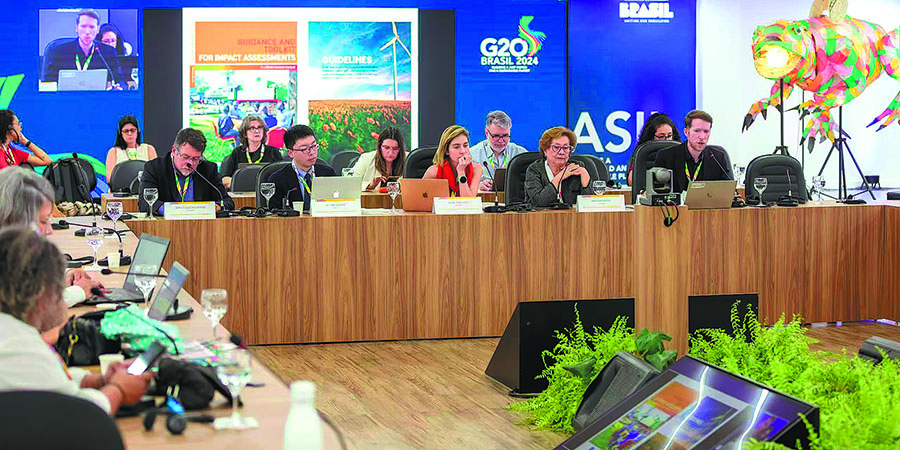

The plight of indigenous people is a priority for Brazil, according to the country's delegates. Native communities are the most affected and vulnerable to climate change.
The Brazilian experts emphasize indigenous communities are in many ways living heritage, possessing intrinsic value in their unique way of life, and their wisdom should play a greater role in combating climate change.
Yan is also impressed by Spanish representative Antonio Antequera's introduction of a green paper on the sustainable management of cultural heritage.
He says the book provides fresh insight and combines academic studies, policy explanation and scientific popularization.
According to Yan, while many other countries' examples were concepts, China has done a lot to actually adapt, and its efforts have been pragmatic.
The restoration of Taishun arched bridges is a prime example of China's reaction mechanism in the face of extreme weather.
The country has also introduced preventive measures to predict the arrival of extreme weather and take action in advance.
For example, the Dunhuang Academy, which oversees the Mogao Caves, a UNESCO World Heritage Site in Dunhuang, Gansu province, has carried out studies on climate influence on the caves and murals over extended periods of time.
Yan says that the academy has collected and analyzed data on the impact of climate and environmental factors on caves and murals. This research enables scholars to understand the correlation between climate and conservation, and to implement targeted measures, such as building protective facilities, conducting regular maintenance and controlling the number of tourists.
But Dunhuang faces new problems in recent years.
In the past, it was a dry area where sandstorms were the major concern. But recently, the arrival of once-rare rainstorms poses new challenges, Yan says.